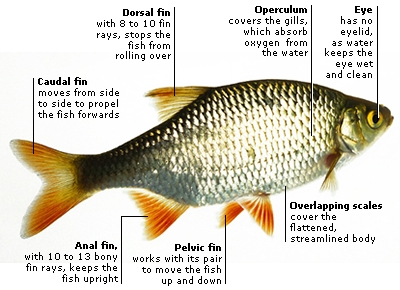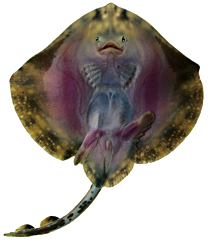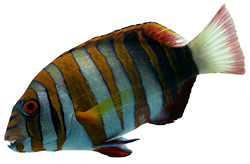Fish are water animals that evolved about 500 million years ago. They were the first animals to have an internal skeleton. Most fish have scale-covered bodies with fins and a tail for swimming. They breathe using gills to absorb oxygen from the water, although a few, such as the lungfish, can survive in air. The four classes of fish – jawless fish, sharks, lungfish, and bony fish – have common characteristics, but are only distantly related.

Bony fish are good swimmers. Muscles, called myotomes, contract in sequence as the fish moves. The tail fin provides thrust, while other fins help the fish to change position or direction. The lateral line, nerve endings along the side of the fish, detects movement in the water. The swim bladder contains the right amount of air, so that the fish neither floats nor sinks.
FILTER FEEDER
AFRICAN LUNGFISH
JAWLESS LAMPREY
FISH
Class: Cyclostomata
Features: sucker-like mouth,

Class: Chondrichthyes
Features: skeleton of cartilage, tooth-like scales

Class: Osteichthyes
Features: bony skeleton, flexible fins, swim bladder

Class: Choanichthyes
Features: lungs, internal nostrils
No comments:
Post a Comment